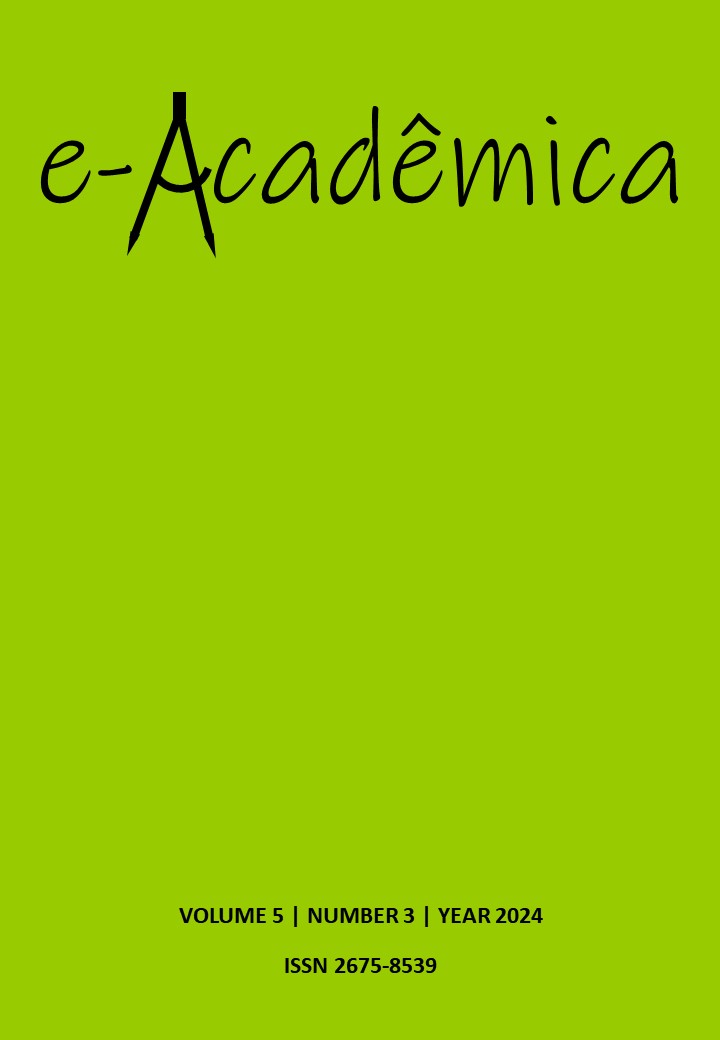Methodologies applied in Performing Arts, Portuguese Language Teaching, and Journalism Courses: Experiences using technology
DOI:
https://doi.org/10.52076/eacad-v5i3.561Keywords:
Digital technologies; Teaching-learning; Collaborative tools; Engagement.Abstract
The objective of this article is to explore the impact of digital technologies on the teaching-learning process in courses of Performing Arts, Portuguese Language Teaching, and Journalism at a public higher education institution in Mozambique. Using an interpretative paradigm, the research followed a semester (March to June 2024), involving three classes composed of students aged between 18 and 30 years, familiar with digital technologies. Through participatory observation, tools such as Kahoot, Mentimeter, Padlet, and Canva were implemented to increase engagement and the quality of academic productions. Kahoot promoted interactive reviews in Performing Arts, while Mentimeter and Padlet facilitated collaboration in Portuguese Language Teaching. In Journalism, Canva played a central role in creating visual presentations. Data collection through direct observations and student feedback revealed a significant increase in participation, especially in interactive activities. Academic productions also showed improvements in qualitative and creative levels, especially in Journalism and Performing Arts courses. This research highlights that the inclusion of digital technologies enriches active learning and prepares students for the challenges of the digital age.
References
Anderson, T. (2008). The theory and practice of online learning. Penang, Malaysia: Athabasca University.
Barroso, M. D. F. (2023). O uso da ferramenta digital canva na prática docente: desafios e possibilidades. Rio de Janeiro, Brasil: e-Publicar.
Bates, A. T. (2022). 7.3 Media or technology?. Teaching in a Digital Age-Third Edition-Translators' version.
Bonwell, C. C., & Eison, J. A. (1991). Active learning: Creating excitement in the classroom. 1991 ASHE-ERIC higher education reports. ERIC Clearinghouse on Higher Education, The George Washington University, One Dupont Circle, Suite 630, Washington, DC 20036-1183.
Delgado, A. J., Wardlow, L., McKnight, K., & O’Malley, K. (2015). Educational technology: A review of the integration, resources, and effectiveness of technology in K-12 classrooms. Journal of Information Technology Education: Research, 14.
Freire, P. (2005). Pedagogia da Autonomia: Saberes Necessários à Prática Educativa. São Paulo, Brasil: Paz e Terra.
Gil, A. C. (2002). Como elaborar projetos de pesquisa (Vol. 4, p. 175). atlas.
Guimarães, L. A. (2013). Conceito, fundamentos e as três dimensões do Jornalismo Visual. Comunicação Midiática, 8(3), 6.
Gunther, H. (2006). Pesquisa qualitativa versus pesquisa quantitativa: esta é a questão?. Psicologia: teoria e pesquisa, 22, 201-209.
Huotari, K., & Hamari, J. (2017). A definition for gamification: anchoring gamification in the service marketing literature. Electronic markets, 27(1), 21-31.
Kolb, D. A. (2014). Experiential learning: Experience as the source of learning and development. FT press.
Luckin, R., Bligh, B., Manches, A., Ainsworth, S., Crook, C., & Noss, R. (2012). Decodificando a aprendizagem: A prova, a promessa e o potencial da educação digital.
Marconi, M. A. & Lakatos, E. M. (2017). Fundamentos de Metodologia Científica. (8a ed.), Atlas
Moran, J. (2015). Mudando a educação com metodologias ativas. Convergências Midiáticas, Educação e Cidadania: aproximações jovens.
Mura, S., & Simão, H. S. M. (2021). Novas tecnologias em contexto de sala de aula no ensino superior. Revista Portuguesa de Investigação Educacional, (22), 1-23.
Pereira A. S. et al. (2018). Metodologia da pesquisa científica. UFSM. https://www.ufsm.br/app/uploads/sites/358/2019/02/Metodologia-da-Pesquisa-Cientifica_final.pdf
Prensky, M. (2001). Digital Natives, Digital Immigrants. On the Horizon, 9(5).
Santos Júnior, V. B. & Monteiro, J. C. S. (2021). Padlet e a aprendizagem colaborativa no ensino remoto. In Silva Júnior, Lima Santos & Silva Júnior. Informática e Tecnologia em Contextos Educacionais.
Selwyn, N. (2016). Is technology good for education?. John Wiley & Sons.
Selwyn, N. (2021). Education and technology: Key issues and debates. Bloomsbury Publishing.
Sharma, P. (2014). A study of the impact of ICT tools on the achievement of students in learning educational technology. International Jl of Research (IJR), 1(6), 244-250.
Siemens, G. (2004). A learning theory for the digital age.
Silva Manso, M. P., Silva, R. C. S., & de Aquino, L. D. (2022). O uso da ferramenta colaborativa Canva nos processos de ensino e aprendizagem: achados de um mapeamento sistemático da literatura. Conjecturas, 22(16), 1129-1145.
Tomlinson, C. A. (2001). How to differentiate instruction in mixed-ability classrooms. Ascd.
Vygotsky, L. S. (1978). Mind in society: The development of higher psychological processes (Vol. 86). Harvard university press.
Walsh, Y. (2020). Improving conceptual understanding of statics concepts through tactile feedback tools (Doctoral dissertation, Purdue University Graduate School).
Wang, A. I., & Tahir, R. (2020). The effect of using Kahoot! for learning–A literature review. Computers & Education, 149, 103818.
Wang, Y. H. (2020). Design-based research on integrating learning technology tools into higher education classes to achieve active learning. Computers & Education, 156, 103935.
Downloads
Published
How to Cite
Issue
Section
License
Copyright (c) 2024 Ana Paula Xavier Matusse; Adérito Barbosa; Felipe Angst; Osvaldo Afonso Gabriel Francisco

This work is licensed under a Creative Commons Attribution 4.0 International License.
Autores que publicam nesta revista concordam com os seguintes termos:
1) Autores mantém os direitos autorais e concedem à revista o direito de primeira publicação, com o trabalho simultaneamente licenciado sob a Licença Creative Commons Attribution que permite o compartilhamento do trabalho com reconhecimento da autoria e publicação inicial nesta revista.
2) Autores têm autorização para assumir contratos adicionais separadamente, para distribuição não-exclusiva da versão do trabalho publicada nesta revista (ex.: publicar em repositório institucional ou como capítulo de livro), com reconhecimento de autoria e publicação inicial nesta revista.
3) Autores têm permissão e são estimulados a publicar e distribuir seu trabalho online (ex.: em repositórios institucionais ou na sua página pessoal) a qualquer ponto antes ou durante o processo editorial, já que isso pode gerar alterações produtivas, bem como aumentar o impacto e a citação do trabalho publicado.










